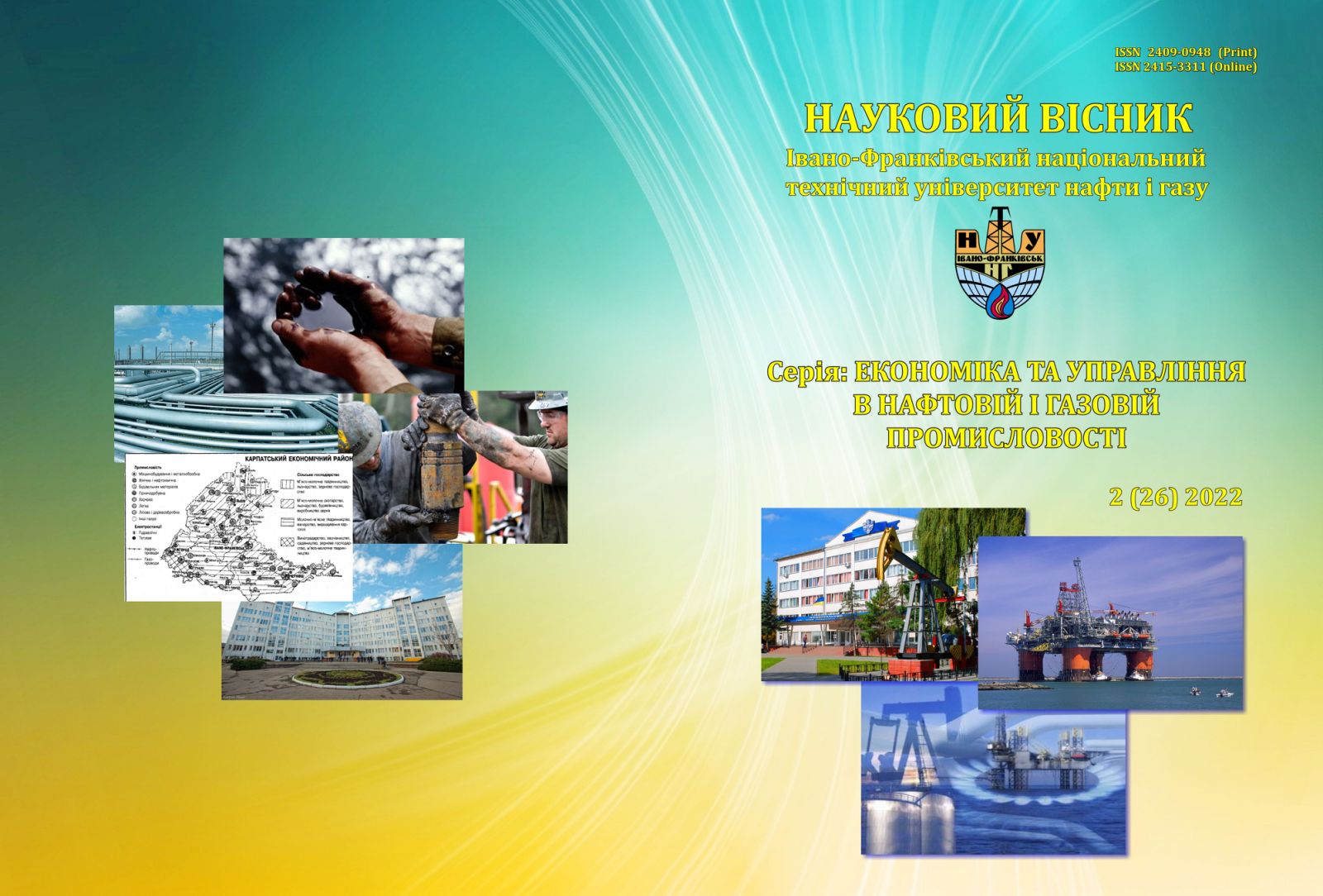REGULATORY POLICY OF UKRAINE IN THE SPHERE OF AGRO-INDUSTRIAL COMPLEX: INTERNATIONAL EXPERIENCE
DOI:
https://doi.org/10.31471/2409-0948-2022-2(26)-140-150Keywords:
regulatory policy, foreign trade regulation, state regulation, tariff regulation, non-tariff regulation, foreign trade, export, export potential.Abstract
The current state of the regulatory policy of Ukraine in the field of agro-industrial complex is analyzed, since the country's regulatory policy requires the solution of complex and extremely important decisions, which, in turn, will contribute to increasing the efficiency of production, the sale of final products and will become a guarantee of the development of rural areas.
The main trends of international trade in goods of the agro-industrial complex are highlighted, namely: strengthening of protectionism of developed countries with simultaneous liberalization of access to agricultural markets of developing countries and countries with transition economies; concentration of countries' efforts on import substitution in the agrarian sphere in order to implement the tasks of food security; strengthening of the positions of transnational corporations on the global markets of agricultural products; etc.
Measures to regulate foreign trade in agricultural products and the level and structure of support for producers of agricultural products, services in agriculture and consumers in the USA, EU countries and Ukraine are compared. It was concluded that due to the inconsistency of national standards with European ones and the system of non-tariff regulation in Ukraine today is also ineffective, and the level of aggregate support for agriculture, the share of aggregate support in the gross added value of agriculture in Ukraine is the lowest, which leads to instability and low efficiency implementation of relevant state budget programs.
The necessity of combining the requirements of international agreements and national regulatory institutions has been proven, and the determining factor, in our opinion, is the economic mechanism, which should express the state's policy. This applies not only to the public sector of the economy, but also to the private sector through the system of indirect measures. Directions and measures for improving the mechanism of state regulation of the agricultural sector in Ukraine are proposed, which is the basis for preparing for a new stage of development of the country's agricultural sector, ensuring the transition of state regulation to the optimization and integration stage, increasing the competitiveness of the agricultural sector, guaranteeing the components of food security, etc.
References
World investment report 2013: Global Value Chain: Investment and Trade for Developmen. United Nations Conference on Trade and Development. 2013. 236 p.
World Investment Report 2008: Transnational Corporations, and the Infrastructure Challenge. United Nations Conference on Trade and Development, 2008, рр. 3.
UNCTAD. URL: http://unctad.org/en/ (дата звернення 28.05.2022).
Мельник Т. М., Головачова О. С. Регуляторна зовнішньоекономічна політика у сфері АПК: вітчизняний і зарубіжний досвід. Економічний часопис-ХХІ, 2015. 3-4(2). С. 12-16.
Market Access Map. URL: http://www. macmap.org/CountryAnalysis/AverageTariff.aspx (дата звернення 28.09.2022).
Producer and Consumer Support Estimates (OECD Database 1986–2012). Organisation for economic cooperation and development. URL: http://stats.oecd.org/Index.aspx? DataSetCode=MON2012TSE_EE (дата звернення 28.05.2022).
Ринки реального сектора економіки України в інституціональному середовищі СОТ: кон’юнктура та інтеграція / за ред. проф. В. О. Точиліна; НАН України, Ін-т екон. та прогнозув. К., 2012. 552 с.
Осташко Т. О. Надзвичайні заходи СОТ для захисту ринків агропродовольчих товарів. НАН України, Ін-т екон. та прогнозув. К., 2011. 102 с.
Довжик О.О. Державна регулятивна аграрна політика в контексті світового досвіду. Економіка і суспільство. Економіка та управління національним господарством. Мукачівський державний університет, 2016. Вип. 2. С. 97-102.
Гальцова О.Л. Державна підтримка інноваційного розвитку в сільському господарстві з використанням механізму ресурсного потенціалу. Інфраструктура ринку: електронне наукове видання, 2019. Випуск 38. С. 441-445. (дата звернення 28.09.2022) http://www.market-infr.od.ua/journals/2019/38_2019_ukr/38_2019.pdf
Гайдуцький П.І. Україні потрібна нова аграрна політика. Економіка АПК. 2005. № 10. С. 3–7.
Дем’яненко М.Я. Фінансові проблеми формування і розвитку аграрного ринку. Фінансові проблеми формування і розвитку аграрного ринку. К.: ННЦ ІАЕ, 2007. С. 5–21.
Фірсов Є.О. Про державне регулювання доходів сільськогосподарських підприємств. Фінансові проблеми формування і розвитку аграрного ринку. К.: ННЦ ІАЕ, 2007. С. 198–207.
Черевко Г.В. Державна підтримка формування пропозиції на аграрному ринку: досвід США. Фінансові проблеми формування і розвитку аграрного ринку. К. ННЦ ІАЕ, 2007. С. 371–378.
Ильина А.А, Кудряшов А.А. Модель цифровой платформы АПК. Экономика, предпринимательство и право. 2020. Т. 10. № 1. С. 99-108.
Сімків Л. Є., Андрусів У. Я. Регулювання диспропорційності економічного зростання регіонів України. Ефективна економіка, 2021 URL: http://www.economy.nayka.com.ua/pdf/1_2021/20.pdf
Andrusiv U., Zelinska H., Galtsova O., Seleznova O., Bahorka M.,& Yurchenko N. (2022). Socio-economic development in the context of using reasonable specialization in the economy of Ukraine. Financial and Credit Activity Problems of Theory and Practice, 2(43), 248–258. Https://doi.org/10.55643/fcaptp.2.43.2022.3729
Downloads
Published
How to Cite
Issue
Section
License
Copyright and Licensing Terms
Copyright Statement
The authors who publish in the journal accept the following conditions:
- The authors retain the copyright and grant the journal the right of first publication, licensed with Creative CommonsCC BY-NC-SA , which permits other people to remix, transform, and build upon the material and use the material for non-commercial purposes, give appropriate credit and distribute the contributions under the same license as the original.
- The authors can conclude additional agreements on the non-exclusive distribution of the journal’s published version of the work (for example, publication of the work in electronic repositories) with an acknowledgment of its initial publication in this journal.
- The authors can upload the published articles on the Internet (for example, in electronic repositories or on web-sites), as it will stimulate fruitful scholarly discussions and increase the citation rates of the published articles.


1.png)


1.png)





